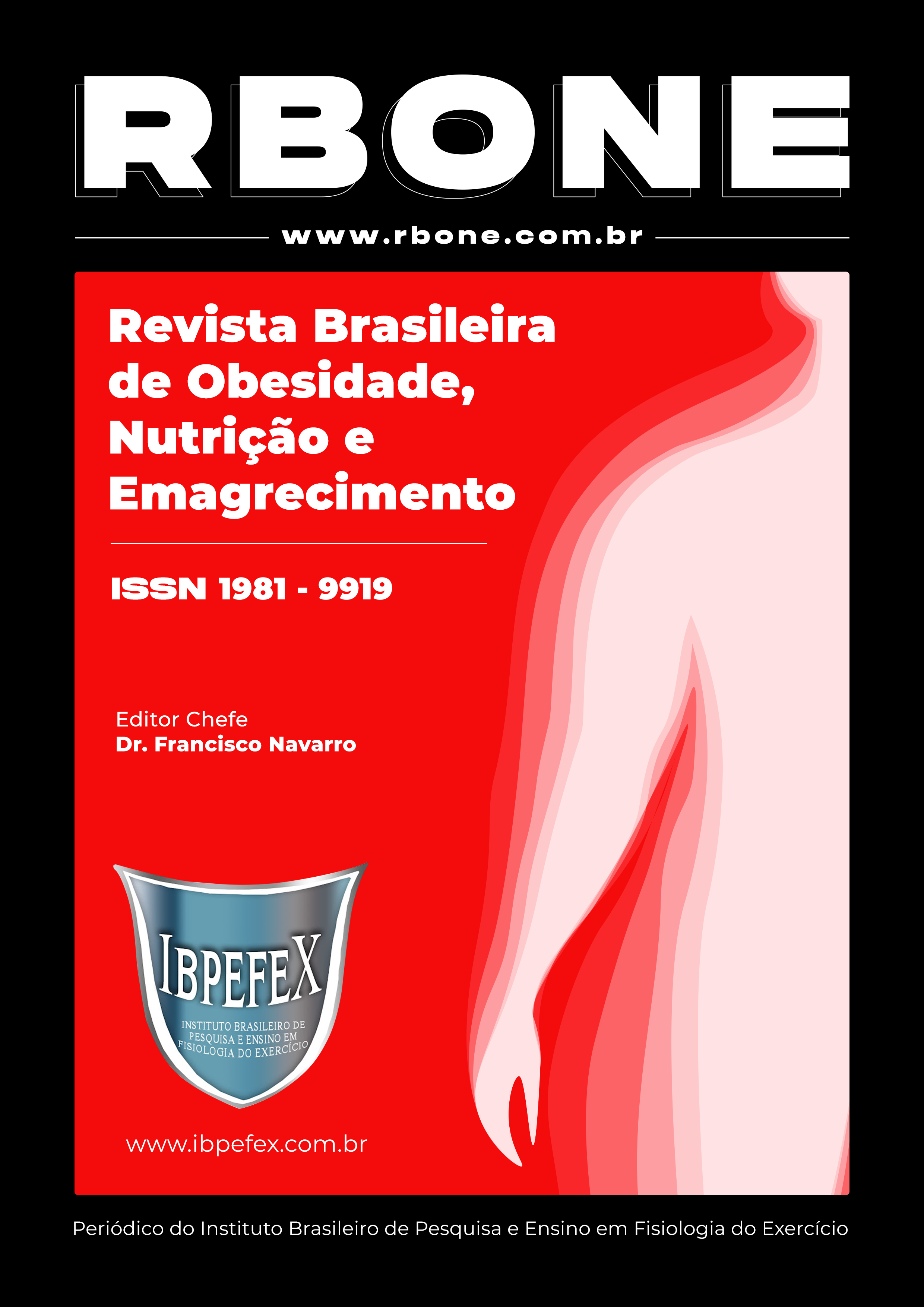Nutritional and sensory quality of crioulo corn flour gluten cookies (Zea Mays)
Abstract
Creole seeds come by natural selection, without genetic modification and without the use of pesticides. Producing gluten-free foods is a challenging process, as gluten is a major contributor to the rheological structure of foods. The objective of this work was to develop gluten-free cookies with creole corn flour with good nutritional quality and good sensory acceptability. Two formulations were made: cookies with creole corn flour and cookie with commercial corn flour. Moisture and ash analyze were determined following the methodologies established by the Instituto Adolfo Lutz. Lipid, protein and fiber determinations were performed following the methods of the Association of Official Analytical Chemists; and carbohydrate values were obtained by difference. In the sensory analysis, the following attributes were evaluated: appearance, odor and aroma, flavor, texture, global impression and preference test. Creole corn flour showed significantly higher values (p>0.05) for moisture, lipids, proteins, ash and crude fiber when compared to commercial corn flour. Cookies with creole corn flour had higher levels of moisture, lipids, ash and crude fiber, while cookies with commercial corn flour had higher levels of carbohydrates. Regarding the sensory analysis, cookies with creole corn flour obtained better acceptance for flavor, texture, odor and aroma and overall impression, obtaining better preference and purchase intention than cookies with commercial corn flour. Therefore, cookies with creole corn flour can be a good option for the celiac population due to its nutritional quality and good acceptability.
References
-ANVISA. Resolução RDC n. 263, de 22 de setembro de 2005. Regulamento técnico para produtos de careais, amidos, farinhas e farelos. Diário Oficial da União. 2005.
-ANVISA. Resolução RDC n. 344, de 13 de dezembro de 2002. Regulamento técnico para fortificação das farinhas de trigo e das farinhas de milho com ferro e ácido fólico. Diário Oficial da União. 2002.
-ANVISA. Resolução RDC n. 360, de 23 de dezembro de 2003. Regulamento técnico sobre rotulagem nutricional de alimentos[Internet]. Diário Oficial da União. Acesso em 2019.
-Altındağ, G.; Certel, M.; Erem, F.; İlknur Konak, Ü. Quality characteristics of gluten- free cookies made of buckwheat, corn, and rice flour with/without transglutaminase. Food sci technol int. Vol. 21. Núm. 3. p.213-20. 2014.
-Amorim, L.O.; Pereira, M.C.B.; Curado, F.F.; Oliveira, L.C.L.; Vasconcelos, E.B. O movimento dos pequenos agricultores e a luta em defesa das sementes crioulas no Alto Sertão Sergipano, Brasil. Rev Geogr. Vol. 34. Núm. 1. p.71-90. 2017.
-Aplevicz, K.S.; Moreira, J.P. Avaliação de goma xantana e carboximetilcelulos em pães para celíacos. Rev Univ Vale Rio Verde. Vol. 13. Núm. 1. p.608-15. 2015.
-Araújo, W.M.C.; Borgo, L.A.; Araújo, H.M.C. Aspectos da química e da funcionalidade das substâncias químicas presentes nos alimentos. In Araújo, W.M.C.; Montebello, N.P.; Botelho, R.B.A.; Borgo, L.A. Alquimia dos alimentos. 2ª edição. Brasília. Editora Senac-DF. p. 99 -163. 2011.
-Becker, F.S.; Damiani, C.; Melo, A.A.M.; Borges, P.R.S.; Boas, E.V.B.V. Incorporation of buriti endocarp flour in gluten-free whole cookies as potential source of dietary fiber. Plant Foods Hum Nutr. Vol. 69. p.344-50. 2014.
-Cassol, K.P. Construindo a autonomia: o caso da associação dos guardiões das sementes crioulas de Ibarama-RS. Dissertação de Mestrado. Santa Maria: Universidade Federal de Santa Maria. 2013.
-Giménez, M.A.; Gámbaro, A.; Miraballes, M.; Roascio, A.; Amarillo, M.; Sammán, N.; Lobo, M. Sensory evaluation and acceptability of gluten-free Andean corn spaghetti. J Sci Food Agric. Vol. 95. Núm. 1. p.186-92. 2015.
-Ikeda, M.; Carvalho, C.W.P.; Helm, C.V.; Azeredo, H.M.C.; Godoy, R.C.B.; Ribani, R.H. Influence of Brazilian pine seed flour addition on rheological, chemical and sensory properties of gluten-free rice flour cakes. Cienc Rural. Vol. 48. Núm. 06. p.1-10. 2018.
-IBGE. Instituto Brasileiro de Geografia e Estatística. Pesquisa de Orçamentos Familiares 2008-2009: tabelas de composição nutricional dos alimentos consumidos no Brasil. Rio de Janeiro: Instituto Brasileiro de Geografia e Estatística. 2011.
-Mariani, M.; Oliveira, V.F.; Faccin, R.; Rios, A.O.; Venzke, J.G. Elaboração e avaliaçãode biscoitos sem glúten a partir de farelo de arroz e farinhas de arroz e de soja. Braz. J Food Technol. Vol. 18. Núm. 1. p.70-8. 2015.
-Pederzoli, B.A.; Lourenço, A.A.; Botelho, F.T. Análise laboratorial de bolos destinados para público infantil e comparação com as informações nutricionais contidas nos rótulos e adequação à legislação. Rev Inst Adolfo Lutz. Vol. 73. Núm. 4. p.358-63. 2014.
-Silva, D.O.; Primio, E.M.; Botelho, F.T.; Gularte, M.A. Valor nutritivo e análise sensorial de pão de sal adicionado de Pereskia aculeata. Demetra. Vol. 9. Núm. 4. p.1027-40. 2014.
-Tavares, J.S.; Mendes, M.C.; Passos, S.R.; Lourenço, A.A.; Pederzoli, B.A.; Soares, C.G.; Botelho, F.T. Composição nutricional de pães do tipo bisnaguinha e comparação com a legislação de rotulagem nutricional. Vigil sanit Debate. Vol. 5. Núm. 1. p.45-51. 2017.
-Wang, K.; Lu, F.; Li, Z.; Zhao, L.; Han, C. Recent developments in gluten-free bread baking approaches: a review. Food sci technol. Vol. 37. Suppl. 1. p.1-9. 2017.
Copyright (c) 2022 Bruna Vaz da Silva, Mayara da Cunha Mendes, Bianca Pio Ávila, Eberson Dietrich Eicholz, Marcia Arocha Gularte, Fabiana Torma Botelho

This work is licensed under a Creative Commons Attribution-NonCommercial 4.0 International License.
Authors who publish in this journal agree to the following terms:
- Authors retain the copyright and grant the journal the right of first publication, with work simultaneously licensed under the Creative Commons Attribution License BY-NC which allows the sharing of the work with acknowledgment of the authorship of the work and initial publication in this journal.
- Authors are authorized to enter into additional contracts separately for non-exclusive distribution of the version of the work published in this journal (eg, publishing in institutional repository or book chapter), with acknowledgment of authorship and initial publication in this journal.
- Authors are allowed and encouraged to post and distribute their work online (eg, in institutional repositories or on their personal page) at any point before or during the editorial process, as this can bring about productive change as well as increase impact and impact. citation of published work (See The Effect of Free Access).






